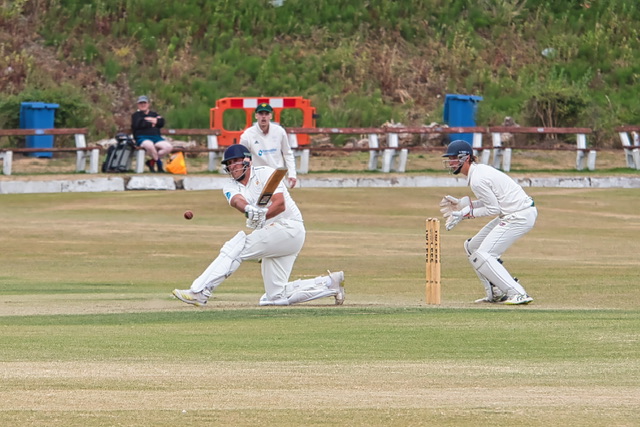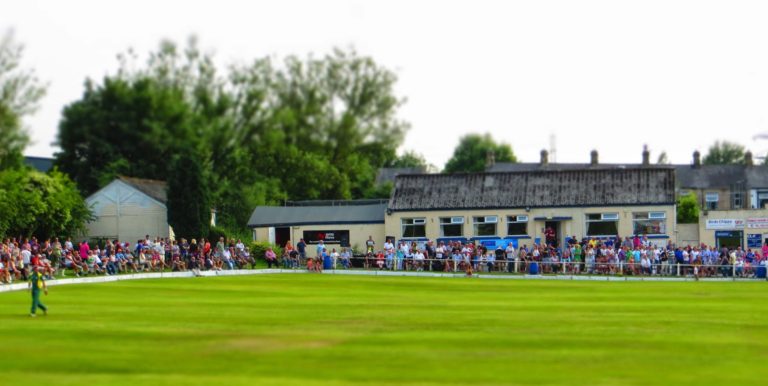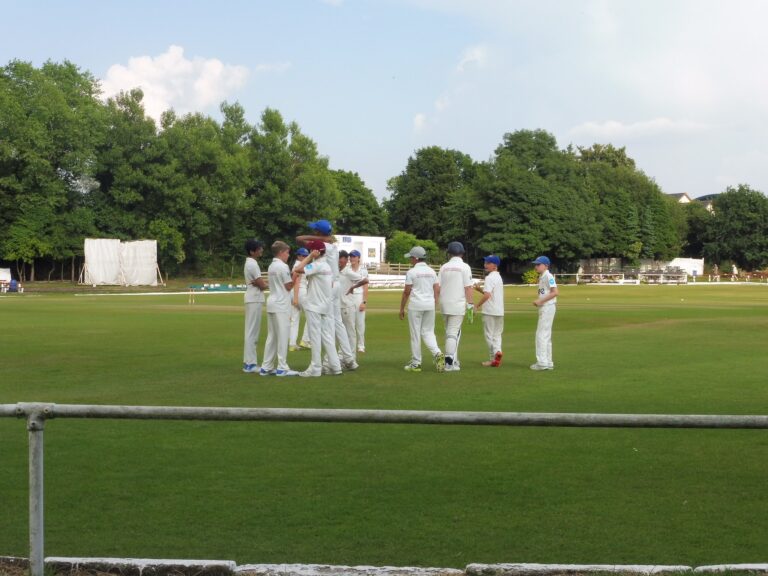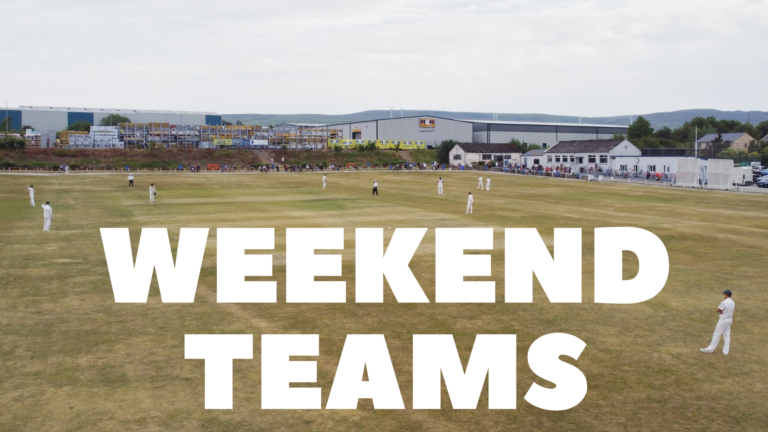Creation of Lowerhouse Cricket Club and tales until 1920
Over the last few years we have been trying to build our archive of the clubs rich history of the last 150+ years.
Today, we will start to digitalise things that we have in the archive and bring some quality reading material to the website. Anne Cochrane has kept the one and only archive of most of the clubs past in recent years as most of the stuff was lost in a fire. Anne has gone through the AGM reports from our outset up until 1920 and has put a facinating peice together about what was discussed. Thanks to Annes effort in creating this.
Creation of Lowerhouse Cricket Club and tales until 1920
By Anne Cochrane
A quick guide to the first 50 years or so – this is not an analysis of cricket matches /scores but rather a quick browse through the early club annual reports looking at the social history of the club.
The beginnings
The context of the times is well worth a mention.
The accepted history as appears in various articles and as published by the club in the 1914 Bazaar programme, is that the present club was founded in 1862 from an amalgamation of local teams, one of which was Habergham Garibaldians, and the club continued to be known as Garibaldians initially.
Garibaldi was an Italian general and patriot, leader of a popular uprising of 1860. He was a folk hero in England; in fact Nottingham Forest devised their strip to reflect the uniform of his soldiers. The name Garibaldians would therefore reflect the working class nature of the team. According to the Haslingden CC history Lowerhouse also wore Garibaldi red shirts.
The American Civil war was also happening. Ports of the Southern States were blockaded preventing cotton getting through to Lancashire mills including the major local employer Dugdales Calico Printworks, which combined with other factors, caused the Cotton Famine of 1861-1865 and there was severe hardship, unemployment, wage cuts and destitution throughout Lancashire.
Lowerhouse Cricket Club was founded in times such as these.
Prior to that, cricket was played in Lowerhouse from about 1855 to 1861 at a ground at the Griffin. There is a newspaper report of a match in the Burnley Advertiser on 7th September 1861 where under “Local and District Intelligence” the editor crossly states:
“Reports of Cricket Matches – We have this week received seven or eight reports of cricket matches with the scoring in each at full length; two or three of them, though the matches were played last Saturday were only received yesterday morning. We are much obliged to our correspondents for their reports but we are compelled to state that we cannot meet all their wishes by inserting their communications at length. We have other readers to provide for besides cricketers and we must be left to judge for ourselves as to the notice we give to cricket matches. As a rule, those which reach us first will have the best chance of being inserted in full.” It was a nice column filler though and he printed various reports including:
“On Saturday a match between the Padiham and Lower House Clubs came off in a field (kindly lent for the occasion) near the Griffin Hotel. The match was for a set of wickets and a ball. …It was won by the gentlemen from Lowerhouse. Afterwards a match at single wicket was played between Mr. Anderton, the Padiham umpire and Mr. H. Whitaker of Habergham who played with the Lowerhouse club and won by the latter, who scored 26 in his two innings and his opponent 9. “
Until the NE Lancashire League was formed in 1891 which in 1892 then became the Lancashire League as we know it today, Lowerhouse would play matches against all sorts of cricket teams for instance on July 31st 1869 there is a newspaper report of the return fixture against Preston North End being played at Lowerhouse and Lowerhouse winning by 25 runs, the scores printed show Lowerhouse scored 90 in their first innings and 24 in their second with PNE batting once for 65, so presumably the match was decided on the first innings, and no doubt it all made sense at the time……
The Club Archive
There exist annual report and accounts from 1869 onwards albeit with some gaps. Initially all the reports finish by thanking the Dugdales for the loan of the ground and the really early ones show that the officers of the club were employed by the Dugdales in Lowerhouse, and no doubt most of the players were too as the 1871 census shows 950 hands worked for the Dugdales.
In 1869 The Secretary states that batting and bowling were poor but the fielding had been really good. The club had been in real need of a pavilion so “with the generous assistance of the public of Lowerhouse and the immediate district we have been enabled to erect a neat and commodious structure…laws have been established which impose upon members the strictest decorum when met within it” “including during the long winter evenings we ought by the introduction of books and newspapers to make it a medium of valuable mutual instruction”….
In 1872 the team had done badly and the Secretary feels that their opponents were benefiting from professional training. There is a lovely photo of the 1872 team, who made the Secretary so despondent, but who were nevertheless apparently worth photographing possibly at Brunton’s in Ightenhill. The Lancs. Evening Telegraph published a copy of the photo in June 1932 identifying it as the 1872 team, naming the players, and comparing it to the team of the day.
In 1874 the first pro Gibson Price was engaged. The young players, the Colts, were especially praised “we feel compelled to assert that the manner in which they have conducted themselves reflects great credit and has greatly assisted in maintaining the honour and dignity of the club”. (and no doubt this is still the case today…).
The balance sheet of 1877 shows they bought an ass for £1/7/- but only got 12/- for it when they sold it at the end of the season. A much depreciated ass.
In 1878 they bought and kept a donkey. Rain and the beast of burden become a recurring theme. In 1878 the club’s financial situation was suddenly described as disastrous “for causes too well known” – so they don’t explain, but it was probably due to a wet summer, match receipts were well down and there was a loss on the annual sports day which the previous year had made a lot of money.
These Athletics Days were staged annually from 1871 to the 34th and last in 1905 and cost a lot to put on, but if successful made a lot of money. (Further research has provided the explanation, severe hardship in the cotton industry, and has been addressed in https://www.lowerhousecc.com/
In 1881 the sun shone on the sports day and all was well again. By 1882 the donkey had become a horse, and the balance sheet shows that there was cash on deposit with the Burnley Building Society. (The Burnley Building Society, incorporated in 1850, was, by 1911, not only ‘by far the largest in the County of Lancashire… but the sixth in magnitude in the kingdom’. )
In 1892 the Lancashire League had been formed and the 1894 accounts show that subs were paid to the League of £3/3/- and that the club had started to pay for league umpires. (That’s three pounds three shillings to the post-decimal generation).
The balance sheets now become fairly standard year on year with the same type of expenditure recorded annually
In 1895 the costs for the pro look really high, but in fact there were two of them, S. Hardy and A. Berry. In “receipts” the club records a fine of 3d but it doesn’t state why. What can someone have done??
In 1896 the Club had its best cricketing year thus far having tied for second place. The horse got new boots. (In case you’re wondering the horse would pull the mower/roller and wore leather boots to prevent damaging the pitch.
1900 was a big year.
The club’s prize for bowling went to 17 year-old James Sutcliffe Heap who later played for Lancashire from 1903 to 1921, playing a few games as part of the 1904 Championship winning team , he had a benefit in 1921 which raised £1804.
Subs were received from Habergham Church Glee Union, who according to Bennett’s History of Burnley used to “encourage the social atmosphere” at Lowerhouse by giving concerts. The horse featured heavily in expenses needing medical attention. Cash was now on deposit with the Union Bank of Manchester not the Burnley Building Society. The Union Bank had a branch in Burnley and in 1919 became part of Barclays.
Also in 1900 the club needed to build a new pavilion and erect hoardings alongside the ground as a new road to Rose Grove had been put through and people could watch from the road for nowt. League books were now being purchased. For the first time insurance was taken out for the players, so the club was really launching itself into the 20th century.
1901 – Unfortunately the 1901 annual report is missing – but a press cutting from the Burnley Express gives a very full report of a game on 25th May 1901 against Burnley when the new pavilion was officially opened “There was an interesting function in addition to the match. Considerable improvements have been effected on the ground, but the most important addition to the comfort of players and members is the provision of a new pavilion. The ceremony of opening was performed by Mr. Gill, the president of the League who, in the course of his remarks, expressed the opinion that it was desirable, in the interests of the game, that the championship of the League should go round, and hoped that Lowerhouse’s turn would come.” Only 100+ years later then. (Burnley won but Lowerhouse fielded better, the report is worth reading).
In 1902 the horse was sold. There was also an item in the balance sheet “nett receipts Grey Mare Dinner.” The two were hopefully not connected.
In 1903 they had to borrow a horse. The Secretary appealed like all secretary’s before and since for subs to be paid promptly.
In 1904 they bought a horse and for the first time there was a cost for Policing which then recurs annually. They also bought practice nets at a cost of £5/10/-
In 1905 the home game v Burnley was washed out so no receipts. Receipts v Burnley were a big factor in the club’s finances as the gate could be 4 times higher than normal. In 1905 the club took adverts for the first time in the League Book and also paid the £2 expenses of a deputation to Nottingham – but gives no clue what this was for. Similarly in 1906 they paid subs of £1/1/- to the NCAA – again no explanation.
From 1905 for a time membership lists and subs were printed on the back of the report and accounts and familiar Lowerhouse names appear Heaton, Drabble, Tranter, Greenwood, Waterworth, Salkeld, Bailey, Whalley, Whittaker etc. The Sports Days ended in 1905.
In 1907 again it rained on the day of the home game v Burnley but this year the gate had been insured and £60 was received. This is about a third of what a good gate would have been but was still a lot of money. There was a grant of £5 to pay for the Players’ and Committee Picnic, which became an annual event for a long time. In later years it involved a charabanc and Blackpool, but presumably in the early years it was literally a picnic.
In 1908 the club paid out £7/1/-, to injured players, the largest amount it had ever paid. They also made a donation of £4/2/6 to the Wigan Colliery Disaster. This was an explosion which killed 72 of the 75 men who were underground at the time.
More and more statistics creep in to the annual report, with League tables also now featuring, showing that the House had a good year finishing 5th.
In 1909 the list shows 555 members. The committee made a grant towards J. Heaton’s funeral expenses and wreath. An annual Meeting was announced to take place at the Junction followed by a dinner. This became an annual event.
In 1910 Lowerhouse had their best year since the formation of the League and tied for second place. They were now getting anxious to pay off the outstanding debt to the President J.T. Dugdale who had lent them £250 to build the pavilion etc. in 1900/01. Lady members were listed for the first time, there were 14.
In 1911, their 50th anniversary year the weather was wretched for many home games. After years of paying for repairs they bought a new mower.
In 1912 the weather was again wretched, a Jubilee fund had been launched to raise money but not met with much success.
In 1913 it was announced the pro for 1914 would be James Atherton a Lancashire 2nd XI player. (He played for the 1914 season and was killed in 1918 in France .) There would be a fund raising Bazaar from 16-18 April 1914 to clear the debts. The AGM dinner had become a knife and fork tea. A flag staff was purchased for 15 shillings.
1914-1918 The War Years
The league seems to have continued initially. The Bazaar was a great success realising £378/7/7 but “owing to wretched support and unfortunate circumstances towards the close of the cricket season “ they made a loss of £75 but this included winter wages paid to the pro. The Committee asked for sums of £1 or more as a loan on the assets of the club. The AGM was to be at the George IV followed by a smoking concert. (According to Wikipedia “Smoking concerts were live performances usually of music before an audience of men only; popular during the Victorian Era. These social occasions were instrumental in introducing new musical forms to the public. At these functions men would smoke and speak of politics while listening to live music. “ )
Utensils had been purchased for the refreshment tent – indicating there was no permanent tea room yet. The horse was sold. The club owed tradesmen a lot of money £87/15/10. There were even more stats in the report. Lowerhouse were bottom of the League.
There were now 36 lady members and there was also a roll of honour showing members in His Majesty’s Forces.
1915 mentions Helm Spencer taking the bowling and batting prizes. The Cricketer archive shows Helm (1891 – 1974) playing for Lancashire in 1914, being one of the most promising young seam bowlers in the county, then the war intervened. He played for Lowerhouse in 1915. After the war he played for Llanelli and qualified for Glamorgan. He played for Glamorgan in 1925 and 1926 then returned to the League as a pro from 1927-29, in 1930 he played for Lowerhouse as a pro , and then as an amateur until 1937 remaining involved with the club for many years afterwards.
It rained on the Burnley game again. Members had lent the club £74 but the response to the £1 loan scheme was disappointing. They were back to borrowing a horse.
The Secretary concludes: “I cannot close this report without referring to the great struggle in which our country is engaged and also to point out that a good percentage of our players and members have responded to the call of duty by joining His Majesty’s Forces. I am sorry to say that one of our Vice Presidents, Lieut. Alan A. Drew lost his life while doing his duty at the Battle of Neauve Chapelle. “
The AGM was to be at the Tim Bobbin followed by a smoking concert and “owing to the restrictions of the Licensing Act the Committee request an early attendance as a prompt start will be made”. There were 42 serving men including A and J Waterworth.
In 1916 it rained on the Burnley Game, subs were well down, but the Tea Room ladies were greatly thanked for the money they contributed. There were now 70 members serving in the forces and the AGM was moved to the Grey Mare, but still with a smoking concert. In 1916 Auditor’s fees cost 6 shillings and Green and Smith Minerals were purchased. Perhaps they were not liked as they are not mentioned again
In 1917 The secretary reported a good financial year. The League was now suspended. They made £19/13/4 on a Cinema Show and Dance. Not much cricket was played:
“The Committee at the beginning of the season arranged a few matches and to all players who took part in these we tender our thanks. Matches are being arranged again for the coming season and we appeal to all old players and also young ones to help all they can to keep the game going until the boys who are now playing a far sterner game come home again. Out of our membership we have over 80 serving in this great world struggle which is going on and I hope and trust that before long a world’s peace will be established. To the parents and relatives of those who have fallen I tender the committee’s sympathy”. The Secretary who wrote those fine words was a Mr. R.E. Wood.
In 1918 J Fairhurst was Secretary and again financially it was a good year. There would be a full league programme for the coming season and he promised a First Class Pro.
Receipts show £3/16 for sheep pasture and loan of the ground. Special thanks go to the Ladies.
“The Committee are glad that this World’s War is now at an end and hope that now things will be brighter. They are sorry to say that they will feel the loss of one of the best of Cricketers in the person of W. Whittaker as we believe he is among the missing.”
As from 1919, the Annual reports which had previously been addressed to Gentlemen, are addressed to Ladies and Gentlemen.
The ground had needed a lot of repair and next season they looked forward to real serious cricket again. They paid £20 for a horse almost 4 times the pre war price. Col. A. Dugdale made a donation of £25 towards the work. The AGM was back to the Junction with an Agenda but no meal or concert.
In 1920 they had made a big loss due to ground improvements, seating for 1000 people, 2 new pay boxes and a stable, but membership was up and receipts rising. “We have got an army hut erected on the field through the generosity of Col. Dugdale and Capt. Sherston (Dugdale’s brother in law, badly injured fighting in France) and we are hoping to have this furnished and ready to use as a refreshment room for next season. Our lady members up to the present have realised about £100 (through sale of work) towards the cost of this hut and the Committee wishes to express their sincere thanks to the ladies for their splendid help. Thanks to our President Col. A. Dugdale for the loan of the ground and the £500 loan. “
These accounts itemise the gate receipts and receipts v Burnley were £102.16 – twice as much as any other game. So it must have stayed fine
Life was otherwise back to normal.





